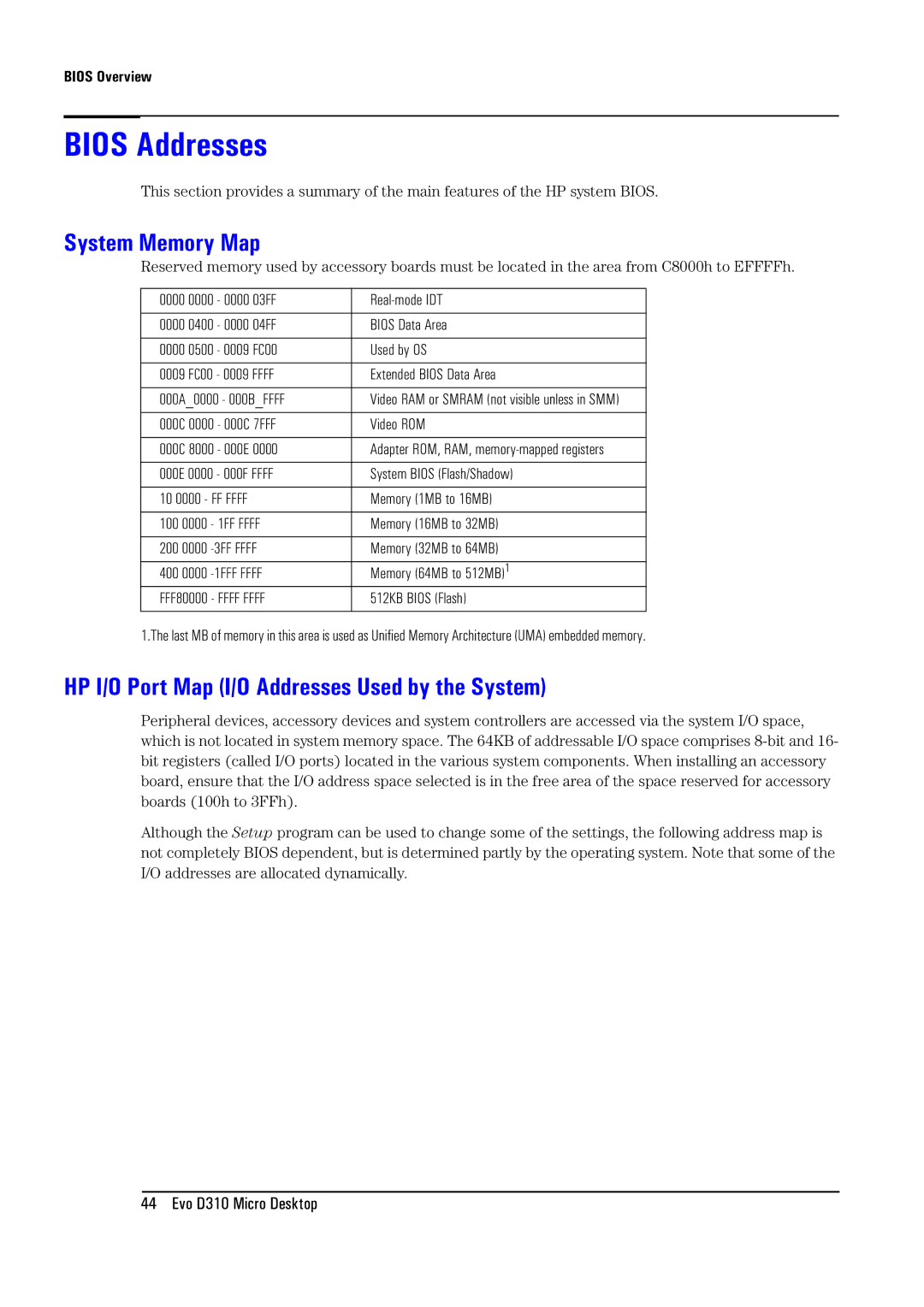
BIOS Overview
BIOS Addresses
This section provides a summary of the main features of the HP system BIOS.
System Memory Map
Reserved memory used by accessory boards must be located in the area from C8000h to EFFFFh.
0000 | 0000 | - 0000 03FF | ||
|
|
|
| |
0000 | 0400 | - 0000 04FF | BIOS Data Area | |
|
|
|
| |
0000 | 0500 | - 0009 FC00 | Used by OS | |
|
|
| ||
0009 | FC00 - 0009 FFFF | Extended BIOS Data Area | ||
|
| |||
000A_0000 - 000B_FFFF | Video RAM or SMRAM (not visible unless in SMM) | |||
|
|
|
| |
000C | 0000 | - 000C 7FFF | Video ROM | |
|
|
|
| |
000C | 8000 | - 000E 0000 | Adapter ROM, RAM, | |
|
|
| ||
000E 0000 | - 000F FFFF | System BIOS (Flash/Shadow) | ||
|
| |||
10 0000 - FF FFFF | Memory (1MB to 16MB) | |||
|
|
| ||
100 0000 | - 1FF FFFF | Memory (16MB to 32MB) | ||
|
|
| ||
200 0000 | Memory (32MB to 64MB) | |||
|
|
| ||
400 0000 | Memory (64MB to 512MB)1 | |||
FFF80000 - FFFF FFFF | 512KB BIOS (Flash) | |||
|
|
|
|
|
1.The last MB of memory in this area is used as Unified Memory Architecture (UMA) embedded memory.
HP I/O Port Map (I/O Addresses Used by the System)
Peripheral devices, accessory devices and system controllers are accessed via the system I/O space, which is not located in system memory space. The 64KB of addressable I/O space comprises
Although the Setup program can be used to change some of the settings, the following address map is not completely BIOS dependent, but is determined partly by the operating system. Note that some of the I/O addresses are allocated dynamically.
44 Evo D310 Micro Desktop
